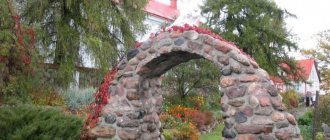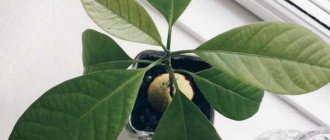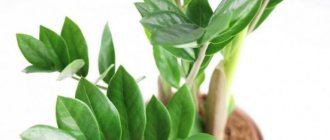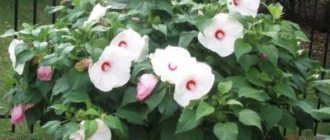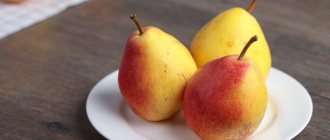Classification
The large-fruited strawberry tree belongs to the Arbutus genus of the Heather family. Its Latin name is Arbutus unedo.
Other names found in Russian:
- common strawberry;
- hedgehog;
- forest apple;
- common arbutus;
- cotoneaster
Note: The term “Strawberry tree” can refer to both the large-fruited Arbutus Unedo and other species of this genus.
One of the representatives of the species Red strawberry tree, also known as Greek strawberry, belongs to the small-fruited species
Description
In nature, strawberry can be found both as a bush and as a tree, reaching a height of 15 meters with a trunk circumference of 80 centimeters.
The growth of the strawberry tree is slow compared to the plants we are used to. So the half-century-old strawberry is only five meters high. But its lifespan is very long. There are even fruit-bearing specimens older than two hundred years.
A feature of the plant is the annual shedding and replacement of bark. An example of the peeling outer layer is shown in the following photograph.

Brown fabric dye is obtained from the peeled bark.
The leaves of the tree are large, shiny, somewhat reminiscent of the usual laurel. They have a well-developed system of conducting veins. There are small, clearly visible notches along the edges.
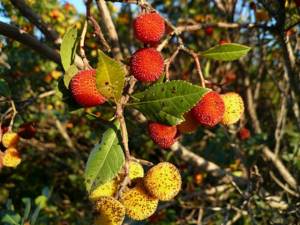
Arbutus
Arbitus blooms in autumn and bears fruit in early winter. At the same time, you can find both flowers and ripening fruits on the tree. In this way, the plant resembles an ordinary strawberry bush.
Flowers in the form of round lantern buds are collected in large clusters and grow on pinkish petioles. Their shade is a delicate cream color, sometimes with yellowness and barely noticeable green on the stigma.
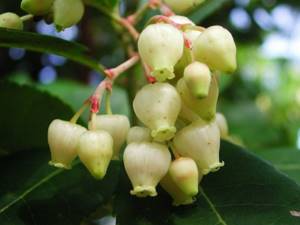
The plant's berries are spherical, with a large number of ovoid seeds. Their pulp is loose yellow in color and tastes really like strawberries. But unlike your favorite berry, it is less sweet. Ripe fruits are light red and reach three centimeters in diameter. The fruits of the strawberry tree are rich in fiber, antioxidants and vitamin C.
Strong strawberry tree juice
May 3, 2012
Alexey Samoilovich
Alexey has been working in journalism for more than 15 years. Among all the countries and edges of the world, he values Portugal most of all - small and cozy, on the very western coast of Eurasia. Only now have we begun to truly get to know this country with a great history and no less interesting present, and this is largely the merit of Alexei Samoilovich. Forward, through time and thousands of kilometers.
- 121 materials
- Write to the author
The fruits of the strawberry tree are edible, they are eaten by people and birds, and winemakers make liqueur from them - medroña. Sometimes it is called not liqueur, but strawberry vodka or even moonshine - aguardente de medronho - but who cares about the exact classification? The drink turns out tasty and quite strong, but what else do you need?
However, not everything turned out so smoothly in the strawberry-moonshine kingdom. For several years now, the Portuguese authorities have refused to issue a license for the production of medroña. The refusals are motivated by the fact that the fruits of the strawberry tree, if eaten in large quantities, supposedly have a stupefying effect, and in some people cause headaches and even hallucinations. Are the Portuguese on the verge of discovering a new absinthe, which served as a source of inspiration for artists and writers? Or have they already discovered it, but are keeping it silent, hiding it from the public?

Most likely, the matter is much simpler. Let's put aside the large-fruited strawberry tree, which serves as a raw material for Portuguese alcohol producers, and turn to its older species brother - just the strawberry tree. A very popular plant, the strawberry tree is even depicted on the coat of arms of the city of Madrid.
The bark (note, only the bark, not the fruit) contains andromedotoxin. Animals that chew on the branches and bark of strawberry trees and shrubs, rhododendrons or other plants of this type often suffer stomach pain from this toxin. Sometimes there is an abnormal amount of andromedotoxin in the nectar of flowers, this makes honey from strawberry trees toxic, but all recorded cases of poisoning are in no way related to hallucinogenic or intoxicating effects, and do not even require medical intervention: all consequences go away on their own in less than a day.
Such poisonous honey is described in the writings of Pliny the Elder and Strabo: the inhabitants of the Black Sea region allegedly poisoned the lives of the conquerors with such honey - the armies of Xenophon (in the 5th century BC) and Pompey (1st century BC). A particularly sophisticated way of taking revenge on conquerors is to feed them honey. Apparently, even in those distant times, things were clearly not without the Helsinki syndrome, and among the Black Sea residents there were beekeepers who sympathized with the attacking armies.
So, what do we have in the bottom line? Toxic bark, edible fruits of the strawberry tree and a long-standing tradition of creating alcoholic drinks that have a whole army of fans. All this explains why the Portuguese authorities, on the one hand, do not issue production permits, but on the other hand, do not in any way punish producers operating without an alcohol certificate: intellectually they understand that they can neither ban nor completely allow such production.
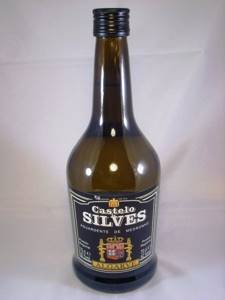
However, now the ice has been broken, and Medronya is slowly emerging from the moonshine underground. In the main region of strawberry trees - Monchique - in the last two years, 70 businessmen have received licenses and brought their medronha out of the shadows, and the municipality of Monchique has even opened its own store selling medronha, and even has plans to build a Casa do Medronho - an entire house dedicated to this drink .
Producers report that in 2011, legal production of medroña increased to 15,000 liters. Of course, this is nothing compared to the volume of the wine industry, but who knows what these numbers will look like by the end of 2012?
There was no rain in Portugal for almost the entire month of February and March, and winemakers were anxiously awaiting a severe drought. In 2005, due to dry weather, Portugal lost about 300 million euros: grain production fell by 45% and wine production by 20%. But strawberry trees don’t care about this: they grow well on dry soils, so by the end of the year we’ll see what Portugal will be drinking - either the traditional port wine, or the no less traditional strawberry medroña that has come out of the underground.
Even more interesting things in our Yandex.Zen channel. Subscribe!
Distribution area
In nature, strawberries grow in the regions of the Mediterranean basin, northern Africa and western Asia. Small-fruited varieties are found in more northern latitudes, for example, in Ireland.
Many strawberry trees grow in Crimea. According to information from Wikipedia, in the vicinity of Gaspra and on the top of Ai-Nikola there are two trees whose age exceeds a thousand years, according to biologists.
Interesting fact! The strawberry tree is a symbol of the Spanish capital and is even featured on the coat of arms of Madrid! This happened in the XII-XIII centuries.
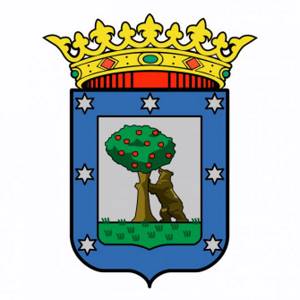
After Madrid, at the behest of Alfonso VIII, took possession of the arbitus groves, a new symbol appeared on the city’s coat of arms - the strawberry tree.
Application of plant parts
Various parts of the strawberry tree are used. The features of this are summarized in the following table:
| Plant part | Application |
| Berries | Cooking |
| Leaves | Leather tanning |
| Bark | Dye |
| Flowers | Honey plant |
| Wood | Carpentry and turning products |
| Whole tree | In landscape design |
Serviceberry bush
Strawberry berries are used both fresh and processed. They are prepared from:
- jam;
- jams;
- compotes;
- juices
By the way, in Portugal, madroño, a strong alcoholic drink, is prepared from strawberries.
Properties of Arbutus fruits
The fruits of the plant are widely used not only in cooking, but also in medicine:
- The flowers of the plant have a diaphoretic effect;
- Preparations for the treatment of the genitourinary system are prepared from the root system;
- All parts of the plant are widely used in “folk” recipes.
In addition, arbutus also supplies components for the production of natural dyes, and the beauty of its wood allows it to be used for the manufacture of decorative furniture elements and various crafts.
Features of cultivation
Due to its evergreen nature, it is possible to grow the tree only in the south of our country, on the Black Sea coast. Seeds and seedlings of various types of strawberries are available for sale on the Internet. They are intended either for southerners or for those amateurs who use growing at home in pots with taking the plants outside after the return frosts have passed.
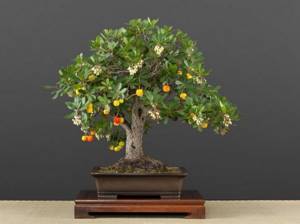
The strawberry tree cultivated using the bonsai technique looks great
Growing
The seeds of the strawberry tree are small and elliptical in shape. From them you can get a full-fledged tree. This can be done much less frequently from cuttings.
Strawberry trees at home are grown from seeds in more than one year. First, they are removed from the fruit, dried, and stored for a year or two. Then they are stratified for two months at a temperature of 21 to 24 degrees in a mixture of peat and sand. Sow the seeds at a depth of 0.7 cm, water and cover with glass. Shoots appear in two months or later. They are watered as needed, and when they grow older, they are planted in pots.
Strawberry tree (Arbutus) is an evergreen heat-loving plant with high decorative qualities. It is especially attractive during the period of flowering and ripening of fruits, which in appearance resemble garden strawberries. It’s easy to verify this just by looking at a photo of a tree with ripening fruits. The plant got its name for this similarity.
Description of the plant, variety and variety
Arbutus is a slow growing plant. At the age of 10 years they reach a height of only 2.5 m, and by the age of 50 - 5 m. They are long-lived. They belong to the Heather family. They grow as a large shrub or low-growing tree.
There are about 14 species of this plant. The most famous are two of them:
- Arbutus unedo – Common strawberry, or large-fruited strawberry tree;
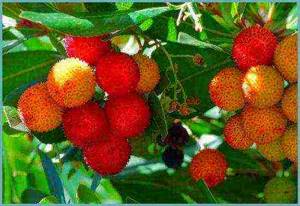
Large-fruited strawberry tree
- Arbutus andrachne – Red strawberry tree – a crop with small fruits.

Red strawberry tree
Large-fruited arbutus is more common in cultivation. The culture is not frost-resistant; in severe winters the plant may freeze. Therefore, in the climatic zone of the Middle Zone and the Moscow region, it is grown in closed ground, greenhouses, winter gardens and residential premises.
The strawberry tree is valued for its decorative qualities. The trunk of the plant is red-brown, the branches are oddly shaped, the leaves are leathery, oval, emerald green. White, cream or pale pink lantern-shaped flowers are collected in panicles. The flowers of the “Rubra” variety have a more saturated pink hue.
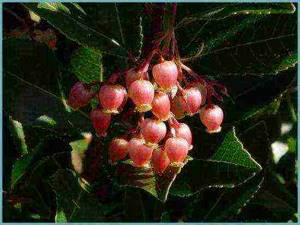
Flowering variety Rubra
The fruits are edible, red-orange when ripe, which in combination with bright green foliage looks very attractive, just look at the photo of the plant during the period of fruit ripening. A characteristic feature of strawberries is the annual shedding of bark. It falls off, revealing a trunk with young, pistachio-colored bark, with some rustling and crackling, for which the plant is nicknamed “whisperer”.
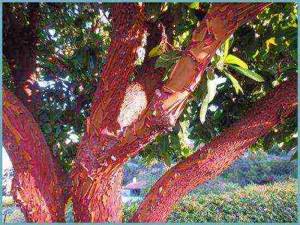
The strawberry tree tends to shed its bark
Planting a strawberry tree
In the Moscow region, strawberry trees are grown mainly as a potted crop. The plant can withstand only minor and short-term frosts, but is not able to tolerate severe frosts. You can purchase a ready-made arbutus seedling or grow a tree from the seeds of ripened fruits.
The process of planting and growing from seeds consists of several stages:
- within 2 months, the seeds are stratified in a substrate consisting of 7 parts of high-moor peat mixed with 3 parts of river sand;
- After this, soak the seeds for a week in warm water;
- plant in the soil to a depth of 1.5 cm, place the container in a warm and shaded place;
- With the emergence of seedlings (within 2-3 months), sometimes spray the sprouts and, without allowing the soil to completely dry out, water.

Strawberry tree seedlings
The strawberry tree can grow well in almost any soil - dense and loose, acidic and alkaline. Any universal soil is quite suitable for growing it indoors.
Advice. For better survival of strawberries, a good option would be to plant them in soil collected from under woody plants.
Strawberry tree: care
This plant is surprisingly unpretentious. Caring for it consists of:
- regular watering during the growing season with soft, settled water;
- sufficient feeding;
- ensuring a period of rest in winter.
The optimal temperature for growing strawberries is 20-25 degrees. This is a light-loving plant and requires good lighting. When kept indoors, it is advisable to place the tree in the fresh air for the summer, placing it in a sunny, wind-free place (a gazebo or balcony is suitable). In winter, after fruiting has ended, it needs to be provided with rest. The most favorable temperature for it during this period is from 3 to 10 degrees.

Strawberry tree with winter garden
Watering during flowering and fruit formation should be regular, moderately abundant, without excessive waterlogging of the soil. The plant is considered drought-resistant and does not need additional spraying. In the cool winter, watering is significantly limited.
Pruning to form the strawberry crown is usually not done, only sanitary pruning is done - in order to remove weak, damaged, dried branches.
Attention! This culture loves fresh air. The room where the plant is located must be ventilated periodically.
Fertilizer and feeding
In spring and summer, feed the plant with compost or manure 2 times a month. When maintaining a house, complex fertilizer is usually used. Nitrogen and potassium fertilizers are used to stimulate growth. In winter, at temperatures below 10-12 degrees, fertilizing is not carried out.
Strawberry propagation
In this culture, 2 methods of propagation are used - seed and apical cuttings of a young plant. They are cut in August and kept in the greenhouse for the first winter, planting them in the ground in the spring after the end of frost. Cuttings taken from an old tree practically do not take root.

Strawberry tree sprouts
Pests and diseases
The strawberry tree is disease resistant. If the watering regime is not followed and the soil is excessively moistened, there is a possibility of fungal diseases; they are identified by brown spots on the foliage. The main pest is the spider mite. He loves to settle on this plant, which adversely affects its development.
Strawberry is a beautiful ornamental plant with edible fruits, during the ripening of which it looks especially picturesque. With proper cultivation and care, the tree will serve as a decoration for a winter garden or living space for many years.
How to grow a strawberry tree: video
Strawberry tree: photo
Strawberry tree or Strawberry - Arbutus (Arbutus) comes from the Heather family, the main habitat of which is on the American continent and in the western regions of Europe.
This is a small plant, in the form of a bush or small tree - a maximum of 10 meters in height. Its crown of arching branches covered with broad green leaves radiates from a trunk covered with brown bark tinged with a reddish or orange tint. The plant annually replaces its bark with a new one, making a special sound reminiscent of a human whisper. Therefore, the Strawberry tree is sometimes called the whisperer.
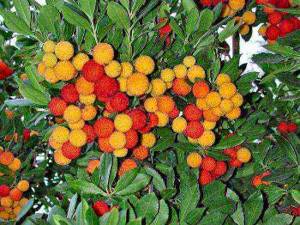
Arbutus.
As a rule, the plant does not exceed 3 meters in height, its foliage, alternately located on the stems, has a dense, leathery surface, smooth edges and a dark green tint. The plant blooms in the spring - in the month of May, covering the crown with white or yellowish inflorescences like erect panicles.
The tree bears fruit, producing fruits in the form of almost round drupes. At the same time, small growths - peas - form on the surface, making the fruit look like strawberries or strawberries. The taste of the fruit of the tree is also similar to strawberries.
Types of wood
In addition to the common arbutus described above, small-fruited species are also found in cultivation.
Small-fruited Greek strawberry
One of the unpretentious types of strawberries. In our country, strawberries have been cultivated in Crimea since 1813 and are also common in other southern regions.

Plants of the species reach a height of five meters, are distinguished by smooth bark that changes color: initially it is turquoise, then becomes lemon, and by the end of summer crimson. At this time, it begins to peel off from the trunk, it is collected and used to prepare paints.
The fruits are small berries with a diameter of 1-1.5 centimeters, classified as multi-seeded drupes. Depending on its habitat, small-fruited strawberry blooms from December to May and bears fruit in June.
Arbutus mencisa
A tall tree reaching a height of 25 meters. The species is named after the Scottish surgeon and naturalist Archibald Mentzis. Its main habitat is the western United States.
It is rare in Russia, mainly on the Black Sea coast.

The species is also small-fruited - the berries are widely ellipsoidal or obovate, 1-1.3 cm long, orange-red, densely tuberculate, slightly obtusely ribbed.
Blooms in May - June. Fruits in September - November.
Hybrid arbutus "Marina"
Information about the hybrid is extremely scarce. They write that it is well suited for growing in the garden. This is where the information ends.
Growing from seeds
You can grow a strawberry tree at home from seeds. In this case, planting material is stocked in the fall, and sowing can be done all year round.
- To begin with, stratification is carried out in a mixture that includes sand (30%) and high-moor peat (70%). The process lasts 2 months.
- Then the plants are left in warm water for a week.
- Next, you can sow into the soil to a depth of one and a half centimeters.
- After a couple of months, sprouts will appear.
- Watering is done as the soil dries.
The strawberry tree is planted in soil taken from under woody plants. In summer they are taken out into the air.
In winter, leave in a cool room. Care is simple. During the growing season, watering is required. Feeding with compost is carried out - a couple of times a month. In winter, fertilizing is carried out once every 30 days, provided that the room temperature is above 10 degrees.
A strawberry tree grown from seeds reaches a height of only 1 meter. Flowering can be expected in the second year from September. The plant can also be propagated by cuttings obtained from young trees. At the same time, they are first planted in a greenhouse, and only then in the ground. Among the tree pests, spider mites can be noted.



